My Favorite Cookware: The Best Pots and Pans
117 Comments
Nov 22, 2023
This post may contain affiliate links. See my disclosure policy.
The best cookware (that’s worth the investment) is durable, non-toxic and lasts a lifetime. My favorite brands of cookware check all those boxes, and are made from materials including stainless steel, cast iron, glass and ceramic.
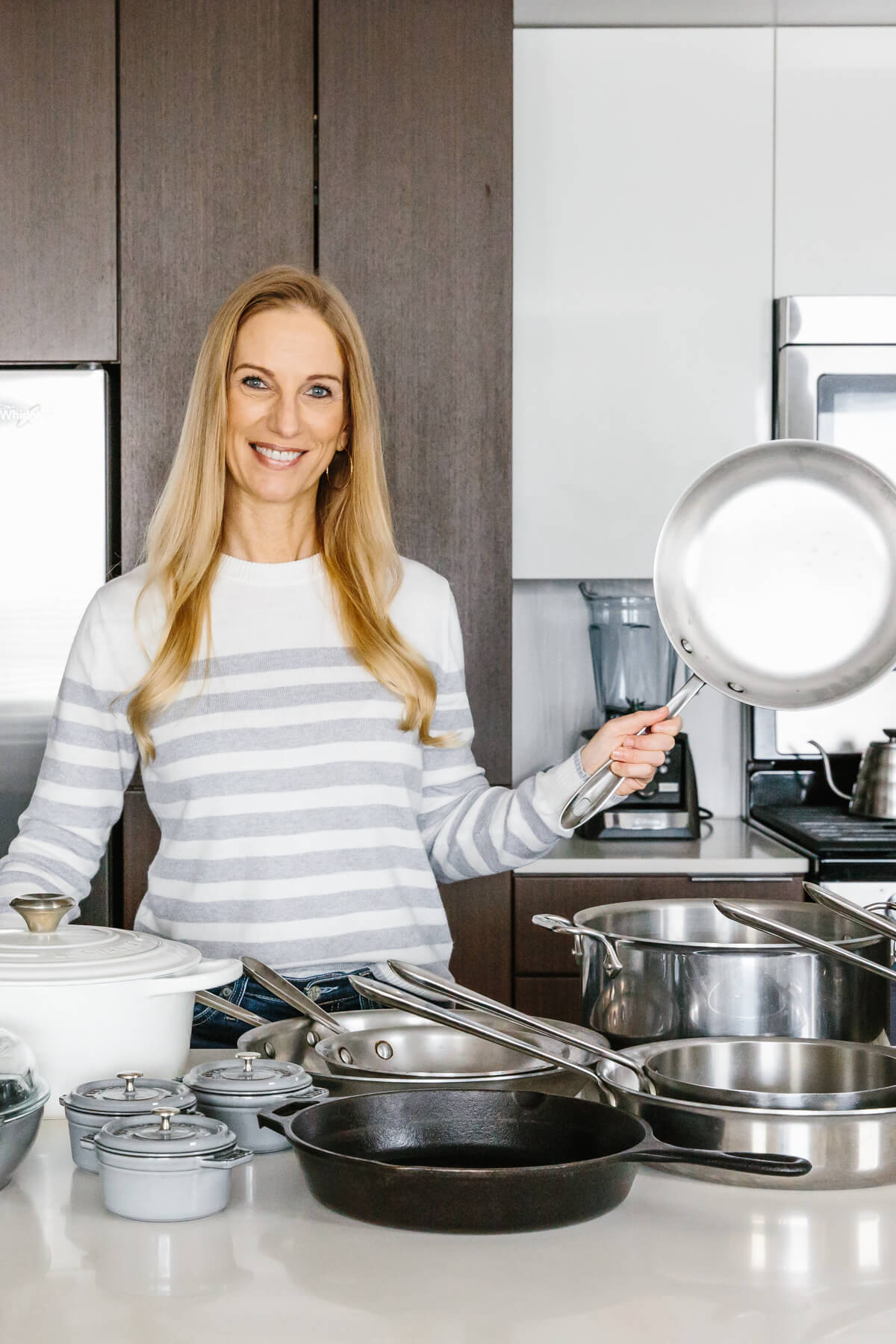
Investing in cookware is like investing in the best Vitamix or other kitchen appliance. It may cost more money upfront, but it more than pays for itself over the long-haul.
So today, I wanted to dive into my cookware and chat about the pieces I use the most, why I love them, and why they’re worth investing in. This post isn’t sponsored by any of the brands you see highlighted, I’m just sharing what I truly love and use in the kitchen. Let’s jump right in!
Watch My Best Cookware Video
In this video I’ll walk you through the various pots and pans in my collection and explain what I love (or don’t love) about them.
After you’ve watched the video, scroll down for more information and links to all of the individual pieces I mentioned in the video.
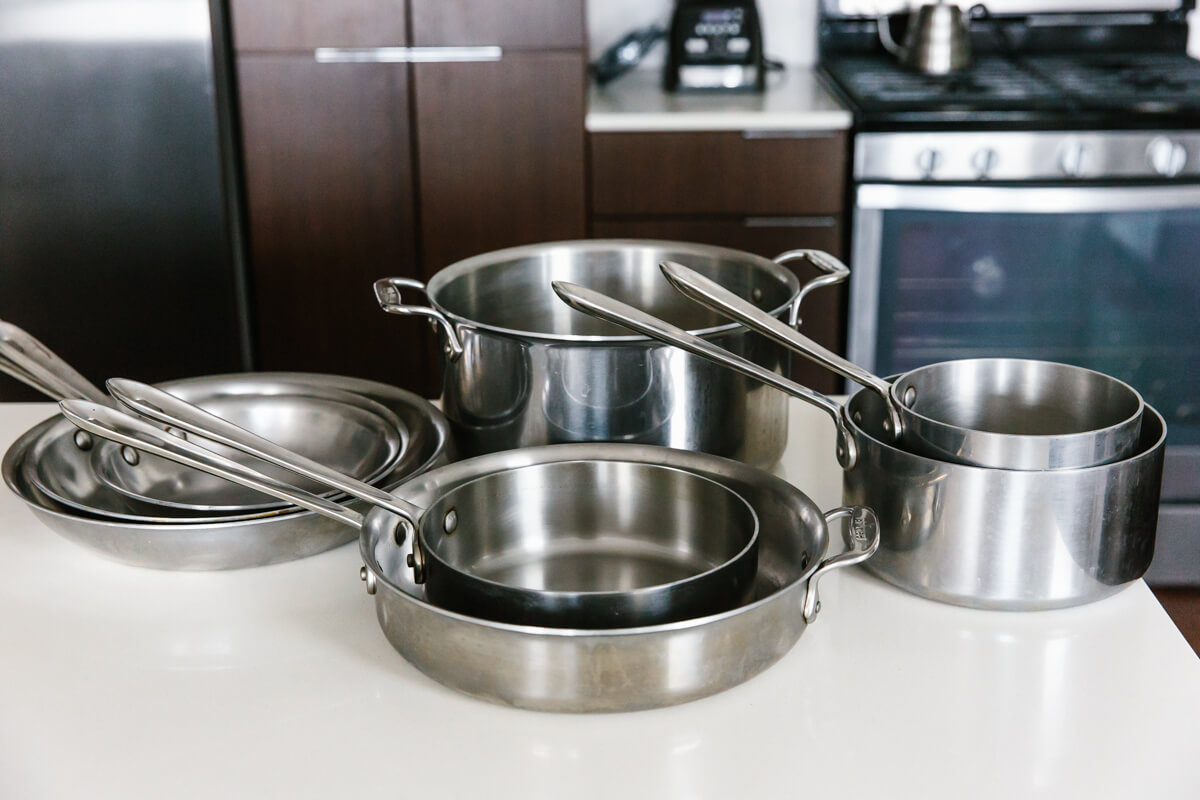
STAINLESS STEEL Cookware
My All Clad stainless steel pans are the workhouse cookware in my kitchen and what I use on a daily basis – for everything from frying eggs, to sautéing chicken and vegetables.
The set you see me use in virtually every YouTube video is now over 25 years old. I bought it right out of college, and it’s still as good today as it was back then. Even if it’s not quite as shiny or clean. But that’s okay, because it just means that it’s been lovingly used in thousands of healthy recipes over the years.
The great thing about All Clad is that it’s long-lasting, durable, provides uniform heating across the pan, and it doesn’t react with any foods or ingredients. And while it’s not cheap, these pots and pans truly will last a lifetime so they’re worth the investment.
I originally bought an All Clad set, which included various sized pots and pans, but you can also buy individual pieces, depending on how many people you cook for or what type of cooking you do, and create your own set. Either way, just know that investing in high-quality stainless steel cookware is definitely a smart choice.
- Recommended Cookware
- All Clad 10-Piece 3-Ply Cookware Set
- Plus individual pieces like an All Clad Multi-Cooker, All-in-One Pan and Oval Bakers.
ENAMELED CAST IRON CookWare
When it comes to enameled cast iron, I always have a hard time choosing between Staub and Le Creuset. I just love them both and have several pieces from both brands, so don’t ask me to choose a favorite.
Enameled cast Cast iron is durable and incredibly easy to clean. In fact, most of the time I just use a sponge to clean it. And unlike regular cast iron, enameled cast iron doesn’t have to be seasoned.
I use my enameled cast iron most often in the fall and winter when I make things like chicken soup, beef stew, prime rib, or braised meat. And enameled cast iron can easily transfer from the stovetop to the oven, just as stainless steel can. If you take good care of these pieces, they can certainly last a lifetime so they’re worth the investment.
- Recommended Cookware
CAST IRON Cookware
Simple, non-enameled cast iron cookware takes us back to an older time, and that’s because it truly has been around for over a thousand years.
Cast iron is sustainable, probably the most durable cookware in my kitchen, inexpensive, and healthy to cook with. It may take a bit longer to heat up, but when it does come to temperature, it can maintain that heat perfectly. And when it comes to searing a filet mignon or roasting chicken, it’s really hard to beat.
But the best part about cast iron is that it’s the original non-stick cookware. A properly seasoned cast iron pan will easily release eggs, meat and pretty much anything you toss in it.
You do have to be a little careful with acidic foods, so I recommend enameled cast iron or stainless steel for recipes like shakshuka. But with how cheap cast iron pans are, it definitely makes sense to have a couple of these in your kitchen.
- Recommended Cookware
- Lodge Skillet Set (8-inch, 10 1/4-inch, and 12-inch)
- Lodge 10 1/2-inch Grill
GLASS & CERAMIC Cookware
When it comes to baking or roasting, you’ve seen me use both glass and ceramic pans. Brands like Pyrex and Corning Ware are budget-friendly, while higher-end brands include Le Creuset, Staub and Emile Henry.
Glass and ceramic won’t release any chemicals or toxic metals into your food and they’re extremely durable, as long as you don’t cause any rapid change in temperature.
I use these all the time for breakfast casseroles, baked oatmeal, baked chicken breasts, and stuffed peppers, and they can easily go from the oven straight to your dinner table. So I do recommend you have a couple of these pieces in your cookware lineup.
- Recommended Cookware
NON-STICK Cookware
Alright, I’ve left this one to last because many of you know that I’m not a huge fan of non-stick cookware, due to health and safety reasons.
Non-stick pans fall into two categories – those coated with polytetrafluoroethylene (PTFE) and those coated with ceramic. PTFE is the classic non-stick surface you might know better as Teflon, and ceramic pans might be called “green” pans.
Historically, PTFE pans also contained another chemical called PFOA, but this was deemed to be cancer causing and affect growth, development and reproduction, among other things. So, for several years now, PTFE pans no longer contain PFOA, which is good, but that chemical was just swapped for another called GenX and we don’t yet know the long-term ramifications of it.
The problem with PTFE cookware is that at high temperatures, the nonstick coating can break down and release toxic fumes and chemicals into the air and food. And if the surface coating starts to scratch and wear, it can also release toxic chemicals into your food.
So you might be thinking, well ceramic non-stick must be better, right? Well, not so fast. Ceramic pans are marketed with buzzwords like “green” and “healthy” but the surface of ceramic pans actually don’t last as long as PTFE pans. And the ceramic coating on non-stick pans is not the same ceramic that you’d find in 100% ceramic bakeware. It’s a bit misleading.
The big grey area with ceramic non-stick pans is that they contain nanoparticles which can enter our cells, and there’s not enough research or long-term scientific studies yet to understand the potential adverse effects they may have.
So for all those reasons, I’m not a proponent of non-stick, but I also like to keep things real. And I’ll be honest, I still have a couple of non-stick pans in my kitchen that I use pretty infrequently, for low-heat cooking like omelets and scrambled eggs.
If you’re going to use non-stick here are my 3 big tips:
- Always cook on low or medium-heat and never use a high temperature.
- Always use wood or silicone spatulas so that you don’t damage the surface of the pan.
- Replace your non-stick pans every couple of years or as soon as you see the surface start to wear.
Because non-stick pans are not pans you will have long-term, I don’t recommend investing in more expensive ones with stainless steel bottoms. The bottom will outlast the top. So it’s just not worth the money.
The ones I have, which are Ballarini pans, have remained perfectly non-stick for a couple of years now, and so far there’s no sign of destruction to the surface. But again, I’m super careful with them.
The big take-away is that non-stick pans should not be your daily, workhorse pans in the kitchen. There are much better, healthier, and more cost-effective options that will last a lifetime.
- Recommended Cookware
I should also mention that there’s a 100% ceramic pan, called Xtrema on the market that has been getting praise, but I tried this pan for several weeks and was personally not a fan of it. My complaints with the pan:
- The lowest temperature setting must be used at all times.
- I found it didn’t heat evenly (there were hot spots).
- Even when using oil I found that it was not non-stick as it claimed.
- It’s not durable. It’s prone to cracking and can more easily break.
UTENSILS
Lastly, when it comes to utensils I do have a few favorites, including stainless steel, wood and silicone. The stainless steel utensils from Crate and Barrel are strong and durable. They never bend or warp, no matter how much pressure you put on them. I use these with all my All Clad pots and pans.
- Recommended Utensils
So if you’re going to invest in cookware this holiday season, I highly recommend you invest in All Clad, Staub, Le Creuset and Lodge Cast Iron. They’re truly the best cookware brands with pieces that will last a lifetime, and worth the money!
Originally posted November 2019, but updated to include new information and products.
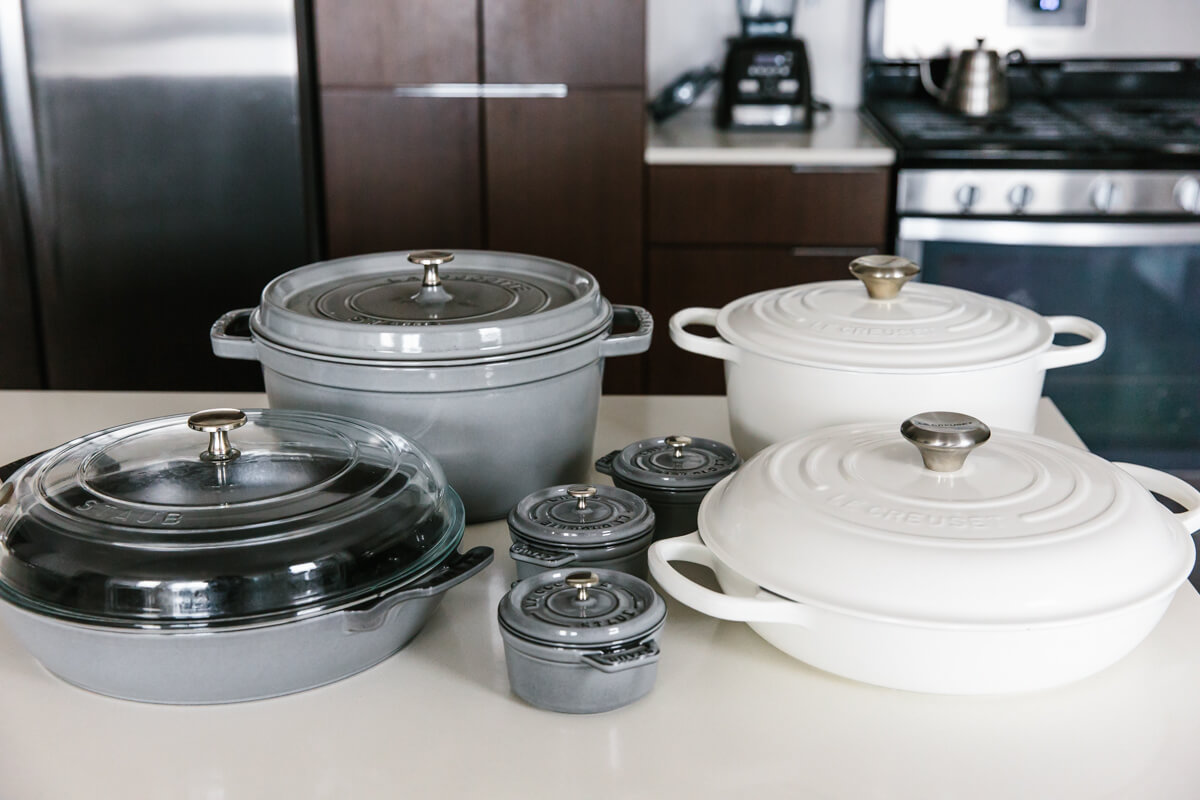

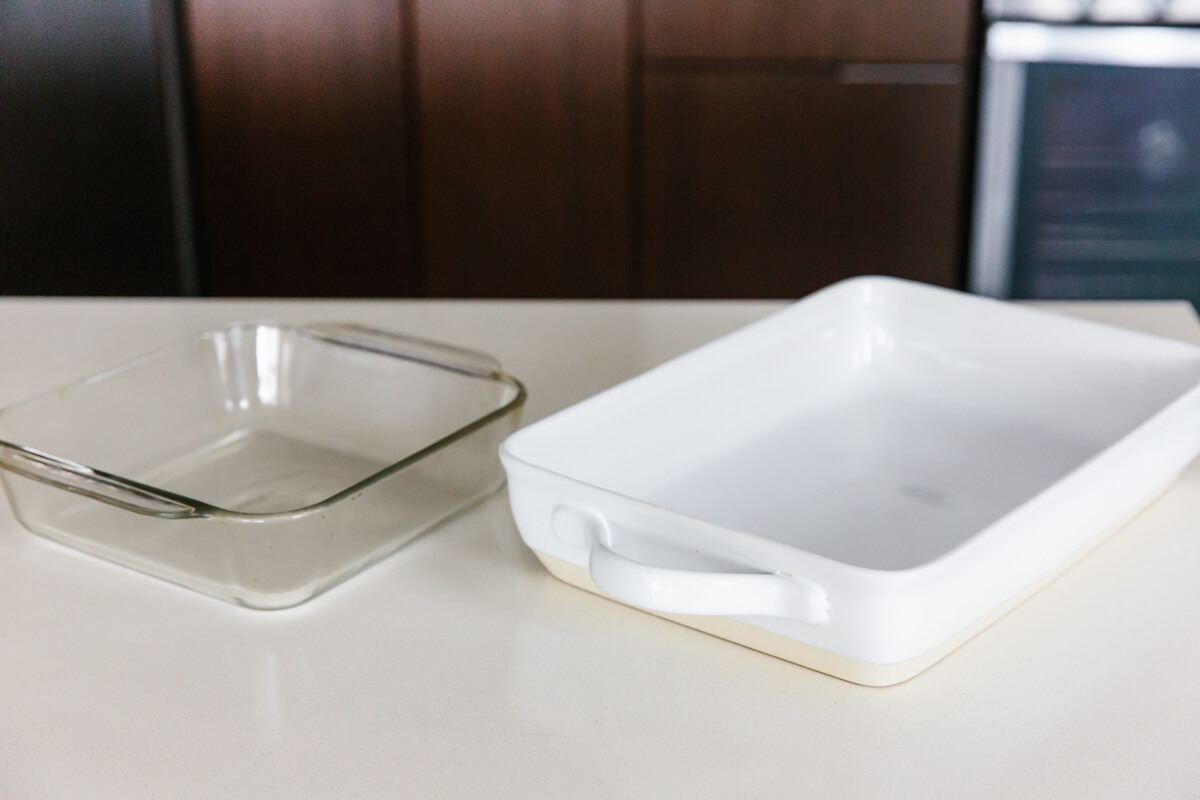
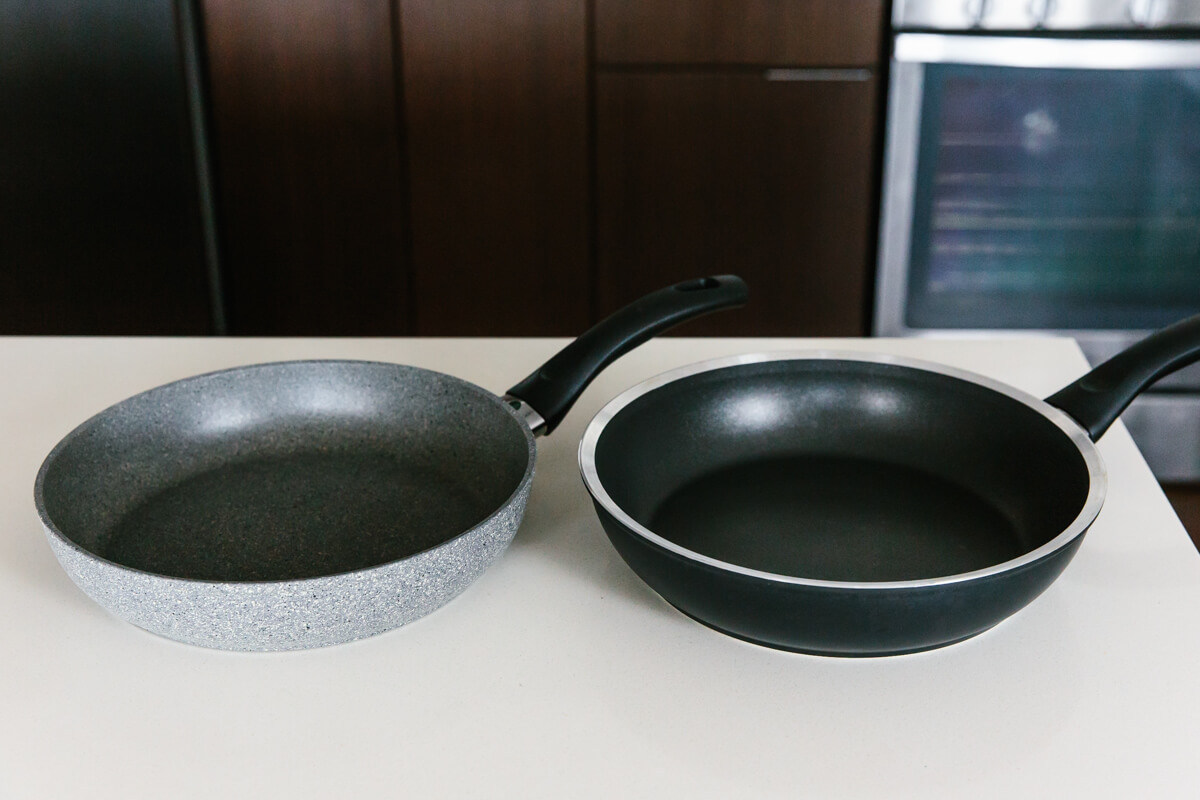
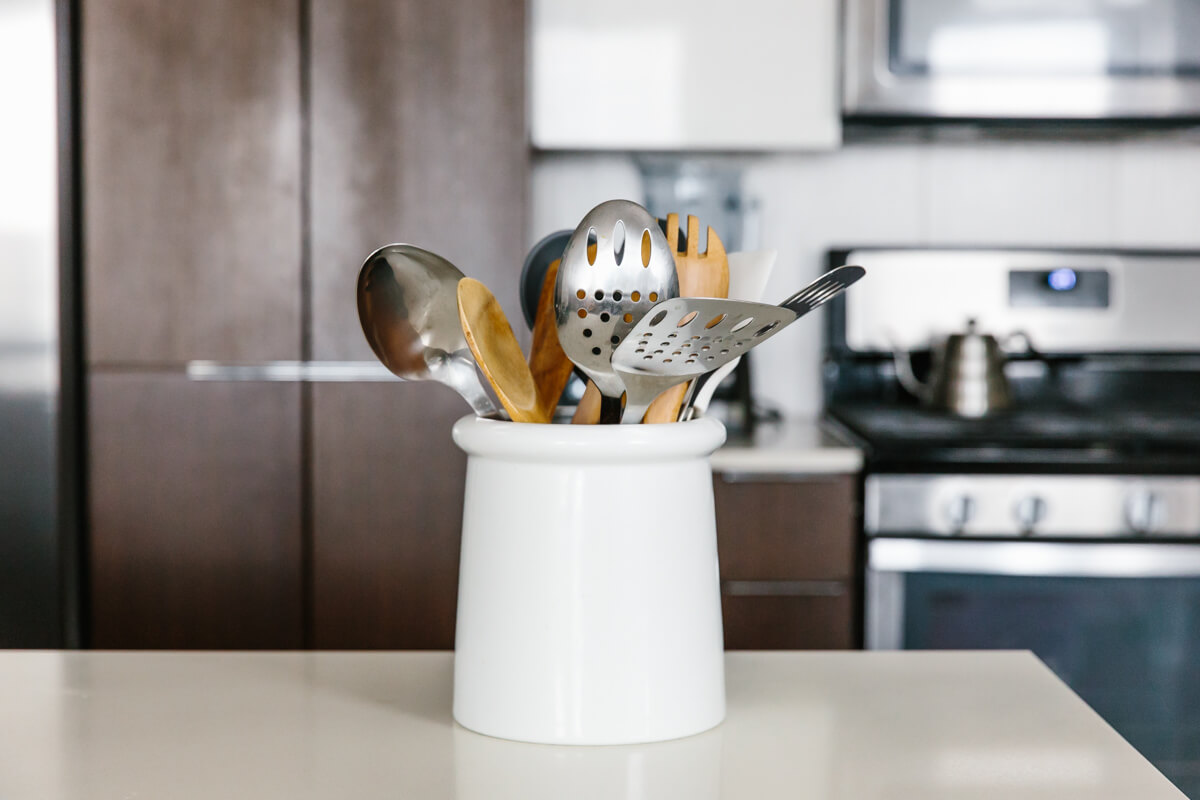








Hi Lisa, thank you for your post on cookware. I love your youtube channel and blog. You break things down so that any level cook can follow. My husband’s birthday is coming up. He loves his all clad, but is dying for a nonstick for occasional use. I think it would be a great surprise as I have outlawed it for many years LOL. I don’t love the idea, but he does most of the cooking and is quite talented. I am sad to see the Ballerini Como is out of stock everywhere. The 2 piece Como set is just what I was looking for. There are other lines by Ballerini, can you recommend a comparable one? I agree with you, they need to go as soon as they show signs of wear so I don’t want to break the bank.
Hi Nicole – I now have the Zwilling non-stick pan as well. You can find it linked on my Amazon storefront. :)
What are your thoughts about Hexclad? Do you think it still poses a risk if used at high temps because it is nonstick?
Hi Kelli – I’m personally not a fan of Hexclad. Because yes, it’s still a non-stick pan.
Hi Lisa,
I have been reading through a lot of your recipes and other information recently and loving it so much! And even though I am extremely frugal, I splurged on a set of All-Clad Stainless Steel cookware based on your recommendation. I heat the pan first, then add the oil but everything continues to stick and cause the pan to burn! What am I doing wrong?
Hi Megan – Congrats on your new cookware! Cooking in stainless is different from cooking in nonstick, if that’s what you’re used to. And keep in mind that it’s not nonstick, so things do often stick, but you get used to working with it after a while. :) If the pan is burning, I’d say it sounds like your heat is too high. Remember that stainless is really good at conducting heat, so once the pan is warmed up you can often turn it down.
Hi Lisa, Love, love, love your content! I’m wondering your thoughts on Hexclad cookware. I saw they just came out with a pizza steel along with a crepe pan and hybrid wok. It is time to replace my existing and I want to choose well this time around. ;)
Hi Wendy – I don’t love Hexclad. It’s essentially non-stick cookware, but far more expensive due to better marketing.
What do you think of Emeril Lagasse Forever cookware ?
Loved the video. Thank you.
I believe that’s hard anodized cookware. And hard anodized cookware is fine, as long as it hasn’t been treated with an extra non-stick coating.
What about aluminum baking pans ? Do you use them?
Yes, I do use those.
Hi Lisa! What is your opinion of Calphalon Anodized Aluminum Pans? I’ve used mine for over 35 hrs. Thanks! Karen C.
Hi Karen – my understanding is that those pans still contain PTFE. It’s hard to figure out exactly what’s in them as they use marketing lingo like “MineralShield” to describe the surface.
I hope to see a post on knives, especially is you could only have 2. Which would it be?
Hi Brenda – I love my Zwilling pro knives. You can find them linked on my shop page. And a chef’s knife is a must!
I would love to have you share your favorite kitchen knives please.
Hi Katie – I use Zwilling pro knives. They’re linked on my shop page.
I like your cookware choices. II have a mixed bag, even some of my mom’s old Farberware. I really like All-Clad, but Calphalon & Cuisinart are also good. Calphalon makes nice clad stainless ware, to my surprise as they’re known for their non-stick and anodized aluminum ware.
You might try, what is now my go to for cooking: Carbon Steel. It’s a great half way kind of point between Stainless and Cast Iron. With arthritis cropping up in my wrists, I now appreciate the lighter weight, as well. It’s more responsive, sears great, and has beautiful nonstick feature (with seasoning, of course). Not knowing much about it, I started with a brand called BK which is thinner steel, hence a nice light weight I wanted, AND came pre-seasoned. I’ve used it a lot, and even taken it when staying at a B&B (was so nice to have with me).
Then I discovered Matfer Bourgeat which is heftier (still much lighter than cast iron), doesn’t come pre-seasoned, and is just a great pan. Goes from stove top to oven with no caveats. It is my workhorse, handling everything from eggs & omelettes, to cornbread & German pancakes. If you use products like Buzzy Wax to season, it makes coating it properly much easier for the beginner. I have enough practice that rubbing in a touch of Grape Seed oil, after each use, is a snap. Seasoning is not that big a deal to do, nor keep up.
There are warnings about not cooking acidic foods like tomato sauce for longer periods of time in carbon steel. That said, I forgot and cooked up a nice dish where I made the tomato sauce with it. Pan came out very shiny, and no metallic flavor. BUT, my seasoning had been built up over several months, and the oils actually form a bond with the metal, so it didn’t completely destroy the seasoning. Ar a quick maintenance seasoning, eggs slide around like hockey puck again.
You bring up some great points with carbon steel, Joe! I recently purchased a few new pieces myself to test out. :) I’ll update this post with my thoughts in the future!